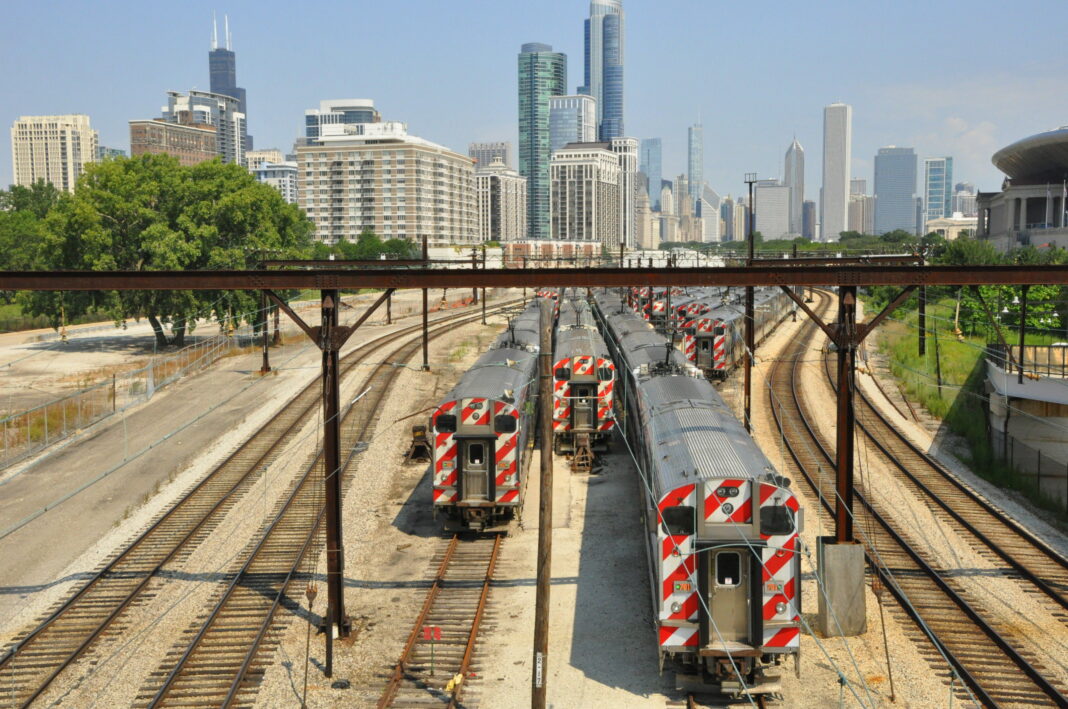As cities across the country deal with widening income gaps and cultural disparities, one persistent issue is that where you live has a profound impact on the opportunities available to you.
In Chicago, a city of neighborhoods each with its own rich culture and history, the connection between housing, access to transportation, and upward mobility is crucial for progressing the ability to reach jobs, schools, healthcare, and other essentials that shape economic opportunity, health outcomes, and overall quality of life.
For many residents, transportation is more than just about getting from Point A to Point B; it’s a matter of equity and survival.
Who Faces the Longest Commutes in Chicago?
According to data from the U.S. Census and the Chicago Metropolitan Agency for Planning (CMAP), some residents spend significantly more time in transit when it comes to daily travel across Chicago than those who already work in the downtown or northern areas, where jobs are abundant.
In neighborhoods like Englewood, Roseland, Austin, and Little Village, communities that are predominantly Black and Latino, residents may often face commute times that exceed an hour each way.
By contrast, those living in substantial neighborhoods, such as Lincoln Park or the West Loop, often enjoy commute times of under 20 minutes.
Long commutes have been linked to a range of adverse outcomes, including:
- Increased stress and fatigue
- Higher risk of job loss or poor attendance
- Fewer chances to pursue job training or continuing education
- Reduced time for parenting, rest, or involvement in the community
The daily journey to work can be challenging at times. Still, as the city and region work toward more equitable transit planning, efforts are being made to improve commute times and service in underserved areas, providing more access to transportation, even if it’s electric.
A Ride Through the City
Last month, I traveled across the city, highlighting major transit options, from the 95th Street Red Line to the Loop, up to the North Side, and west to Forest Park on the Blue Line.
Throughout the journey, I observed how each community uniquely uses public transportation, CTA trains and buses, Metra rail, Divvy bikes, and electric scooters, tailoring their choices based on affordability, safety, and efficiency.
One moment that stood out: stepping out of my car near the 103rd Street Metra station, I watched a young female student zip by on a lime green scooter, likely heading back toward Corliss High School.
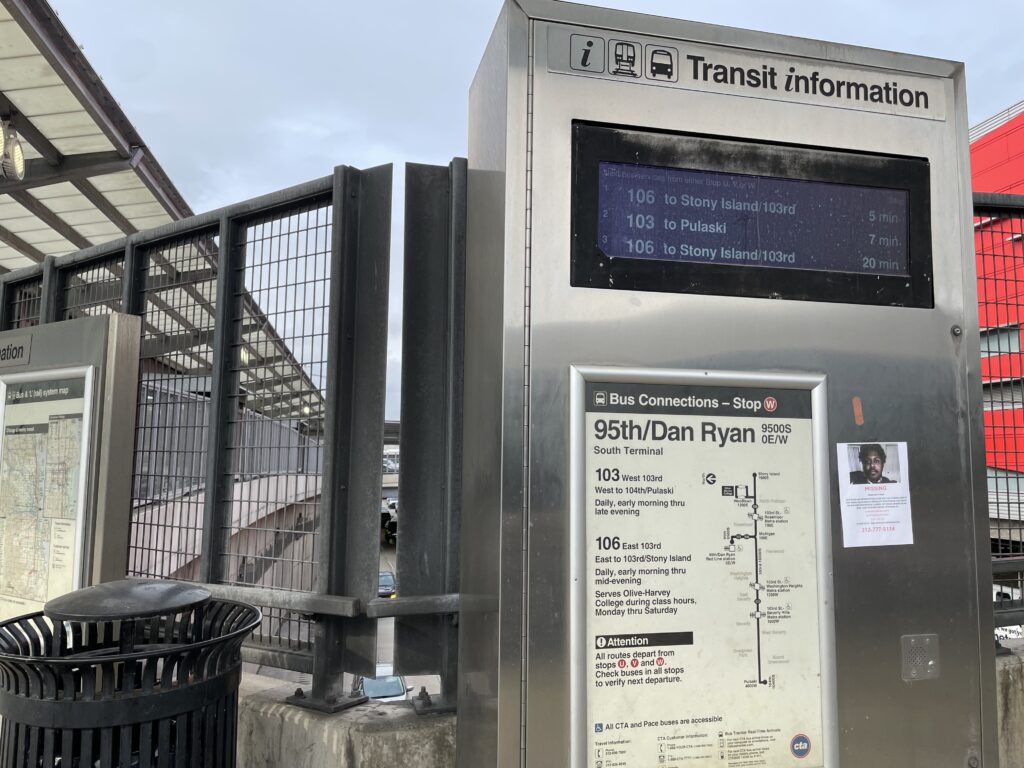
That quick ride may have only taken minutes, but for that young person, it represented access, independence, and the power to move freely through their neighborhood.
Michelle Walker, a paraprofessional at Fenwick High School in Oak Park, shared her experience as a regular public transit commuter. She highlighted both the benefits and challenges of relying on the train system for her daily travel.
“Taking public transportation has improved my daily routine. Walking to and from the train gives me more exercise, I avoid traffic, and I save a lot on gas—what I spend on two weeks of commuting is about the same as a single tank of gas. However, some challenges include waking up early to stay on schedule, being tied to the train’s fixed timetable, and facing potential delays during the commute,” said Walker.
Vanessa Abron, who occasionally takes the Metra, shared that her experience varies depending on the time of day. “I live far away, so during busy rush-hour times, the ride might take about 45 minutes. But if the train stops at every station, it can take an hour or even longer.”
She also highlighted some challenges with the Metra schedule. “If you’re not commuting during rush hour, the wait times between trains can be long. Just last week, I saw a man miss his stop because the doors didn’t open in time. On the CTA, you can usually get off at the next stop and backtrack easily. On Metra, though, that could mean waiting another hour or having to call an Uber or a friend for a ride.”
Additionally, Abron shared concerns about safety at certain stations. “I’ve never had an issue personally, but some of the Metra Electric Line stations at night feel a little too dark. They could definitely be better lit,” she said.
Looking Back to Move Forward: How History Shapes Chicago’s Transportation Challenges
To understand today’s transportation landscape in Chicago, it’s essential to recognize the historical context that shaped it. From the 1930s through the 1960s, federal agencies and local banks systematically denied loans and insurance to residents in predominantly Black neighborhoods, a discriminatory practice known as redlining.
These redlined areas were not only marginalized financially but also cut off from critical investments in infrastructure, including reliable public transportation.
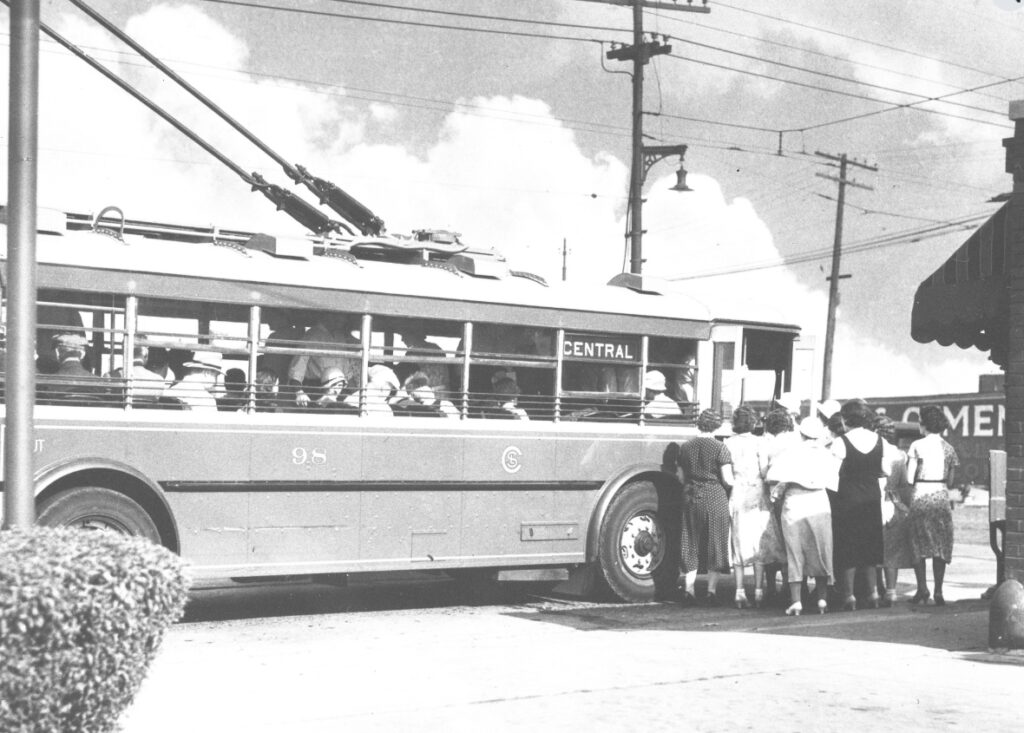
In the mid-20th century, large-scale urban renewal projects led to the displacement of tens of thousands of Black residents. Highways such as the Dan Ryan and Eisenhower Expressways were built directly through Black and Latino communities, physically dividing neighborhoods and further isolating residents from job centers, quality housing, and dependable transit options.
These decisions didn’t just reshape the city’s geography; they fundamentally restructured access to opportunity.
Today, agencies like the CTA and Metra are actively working to improve transit access in historically underserved communities, aiming to connect residents to jobs, education, healthcare, and other essential services in ways that reflect their needs, comfort, and lifestyles.
“Metra fully complies with Title VI of the Civil Rights Act of 1964 and related statutes, executive orders, and regulations in all programs and activities,” said Michael Gillis, Director of Communications at Metra.
“That means Metra is committed to ensuring that no one is denied participation in, or the benefits of, public transportation by commuter rail because of race, color, or national origin,” he said.
CTA and Metra: Progress in Underserved Communities
Chicago’s public transit system includes 8 L train lines and over 100 bus routes. Additionally, Metra provides commuter rail services to the suburbs, while Pace offers bus service across suburban Cook County and other nearby counties.
However, underserved areas on the South and West sides of the city frequently face limited access to train lines or experience reduced bus regularity. In neighborhoods like West Garfield Park and South Shore, transit exists, but the lengthy commute times to reach downtown or distant suburbs make it challenging for many residents.
In contrast, neighborhoods with stronger transit access often experience greater investment, higher property values, and increased business growth. However, the city is actively working to close the gap between communities with abundant transit options and those with limited connectivity.
Metra Advances Accessibility and Service Improvements on the South Side and Beyond
Metra’s station renovation program is currently focused on upgrading and making stations on the Metra Electric Line, which serves the South Side of Chicago and the southern suburbs, more accessible.
“We have set aside hundreds of millions of dollars for this work,” said Michael Gillis, Director of Communications at Metra. “We have already completed renovations at the 79th St./Chatham, 103rd St./Rosemoor, 147th St./Sibley, Hazel Crest, Calumet, Homewood, and Flossmoor stations. The newly rehabbed 87th St./Woodruff Station is set to reopen on October 6.”
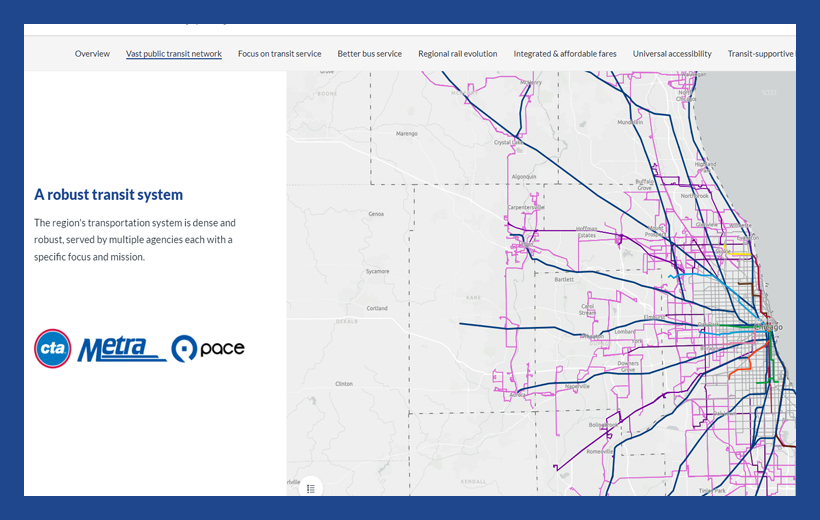
Work is also underway at 95th St./Chicago State University and is about to begin at the Millennium Station’s South Water entrance. Upcoming projects are planned for Van Buren St., 59th-60th/University of Chicago, 111th St./Pullman, Harvey Transportation Center (in partnership with Pace), Olympia Fields, and University Park.
In addition, the CTA is constructing a new, accessible station at Auburn Park, located at 79th St. on the Rock Island Line.
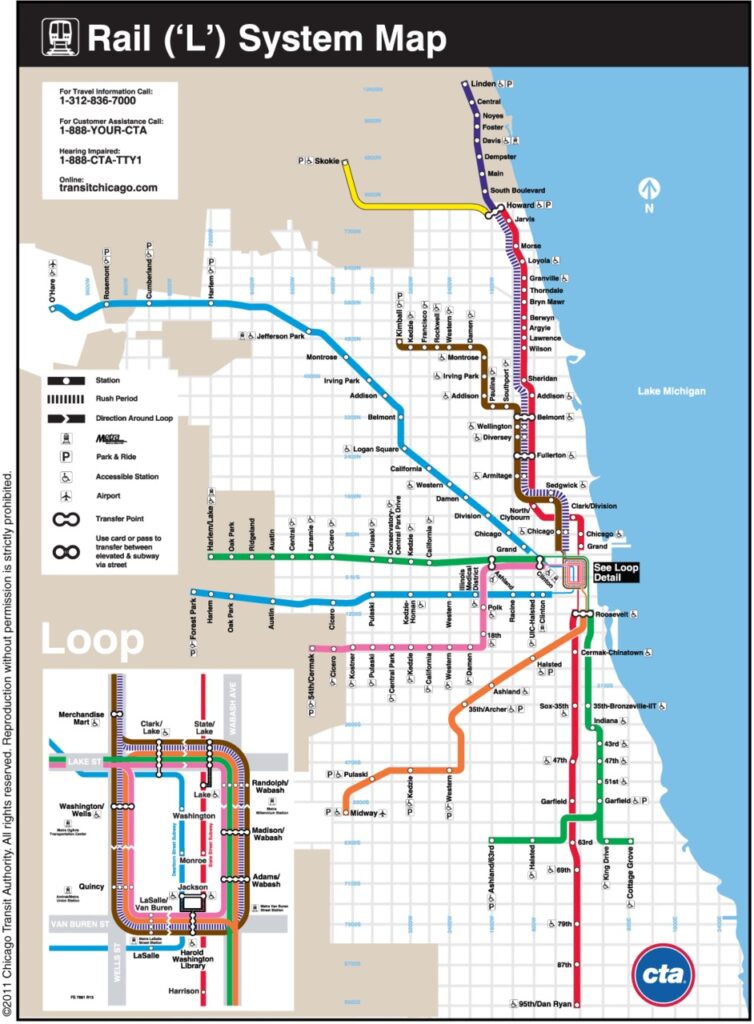
New Fare Structure and Access Pilot Program Promote Affordability
In February 2024, Metra adopted a simplified fare structure that aligns city fares more closely with CTA prices and lowers costs compared to pre-pandemic rates.
“We are also collaborating with Cook County and the Regional Transportation Authority (RTA) to offer reduced fare tickets to riders with low incomes across the region through the Access Pilot Program,” said Gillis.
All Supplemental Nutrition Assistance Program (SNAP) recipients living in Cook, DuPage, Kane, Lake, McHenry, and Will counties are eligible to apply for an Access permit at GetAccess.org. This permit allows use of reduced fare tickets, and the program is scheduled to run from February 1, 2024, through January 31, 2026.
Previously, Metra and Cook County ran a three-year pilot program from 2021 to 2023, offering reduced fares on the Rock Island and Metra Electric lines. This program notably increased ridership in lower-income neighborhoods compared to higher-income areas, as detailed in annual reports.
Investments and Future Vision
The Metra Electric Line benefits from the newest fleet in the system, a result of a $585 million purchase made in the 2010s. For the federal fiscal year 2024, Metra met its federal and state Disadvantaged Business Enterprise (DBE) contracting goals. Additionally, 37% of projects in the 2025 Capital Program are located in or adjacent to Historically Disadvantaged Communities.
“The Metra Electric Line is a major strength for the city; we run more trains on that line than any other,” said Gillis. “We want to increase train frequency systemwide. Our current strategic plan envisions frequent, all-day service, though making that a reality will require significant infrastructure investments and increased operating funds. We are developing a Systemwide Network Plan to identify what improvements are needed by line.”
Safety and Security on Metra
When asked about safety’s impact on transportation and job access, Gillis highlighted that safety is Metra’s highest priority.
“We use a range of tactics, strategies, and policies to protect our riders,” he said. “Our police department officers frequently patrol trains and stations to provide visible security and deter crime. We also conduct regular grade crossing enforcement to remind the public to obey safety measures. Additionally, we hold an annual safety poster contest for local schoolchildren to promote safety awareness.
Transit, Equity, and Community on the Move
Currently, there are no formal policies between employers and transportation providers to coordinate efforts or ensure equal access to reliable transit and job opportunities for all workers, regardless of where they live.
To truly close the equity gap, the city continues to focus on improving service reliability, whether that means helping a mother get to work, a student reach school, or a retail worker arrive on time.
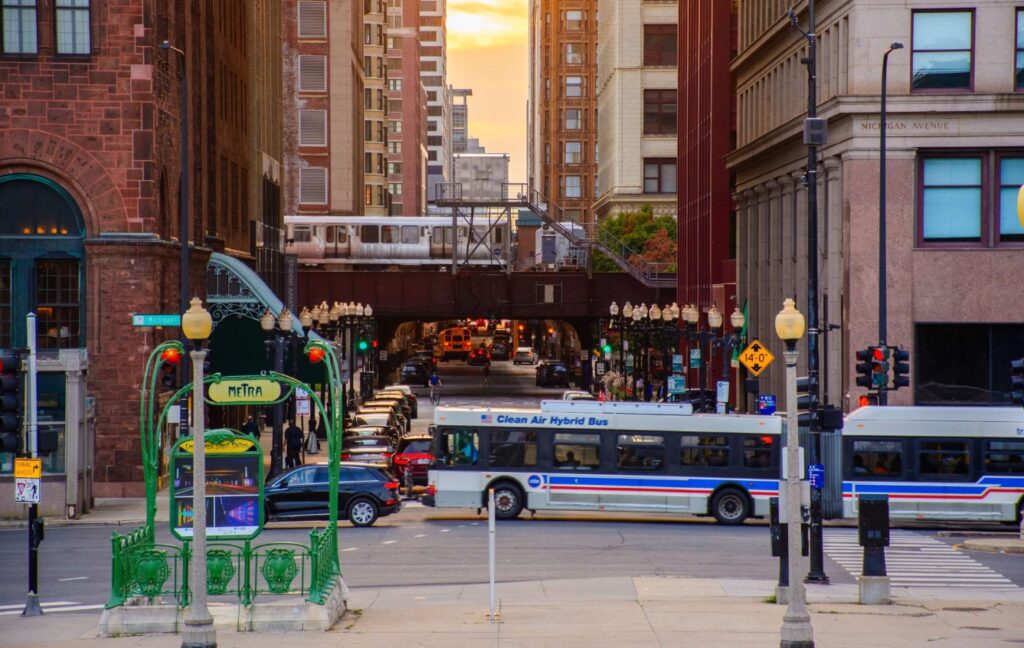
But amid serious funding concerns, Chicago’s transit agencies are also trying to keep things fun and community-focused. With the CTA, Metra, and Pace facing a combined $771 million budget shortfall in 2026, and potential service cuts of up to 40 percent if new state funding isn’t secured, questions loom about the future. Could we see significant reductions in service hours, such as limiting CTA buses and trains to just 6 a.m. to 9 p.m.?
Still, riders will have reasons to smile, thanks to creative collaborations that celebrate Chicago’s culture and community.
Chance the Rapper and CTA: A Chicago Moment
Early Friday morning, Chance the Rapper surprised fans with a history-making moment at his childhood train stop. Through a secret invitation, fans were told to check in by 10 a.m. at a mystery Red Line station. The destination: 95th and the Dan Ryan, where Chance debuted his latest project, Star Line.
Those who joined the ride were treated to a full-blown celebration at the end of the line, complete with free CTA merchandise in Star Line’s signature green and purple colorway, a candy table stacked with Chance’s favorite Chicago snacks, exclusive Chance and CTA artwork, and photo ops with The Rapper himself.
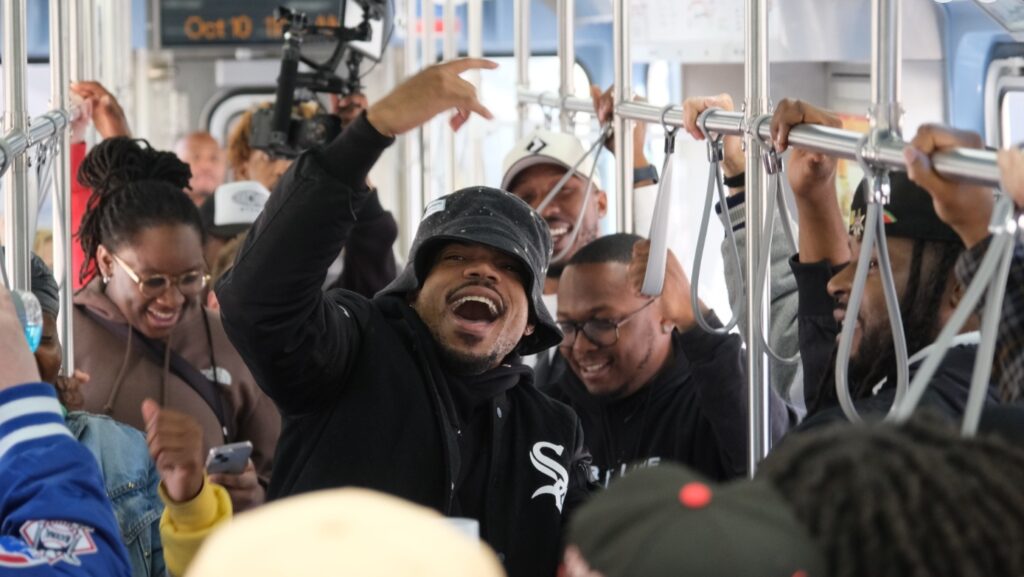
The CTA plans to keep the momentum going by hosting more special events and its beloved holiday trains throughout the city each season.
Metra’s Café Car: A Commuter Experiment
Meanwhile, Metra is taking a different route to engage its riders. The agency recently unveiled a model Café Car, offering complimentary snacks and drinks that rotate across rush-hour trains on its busiest lines.
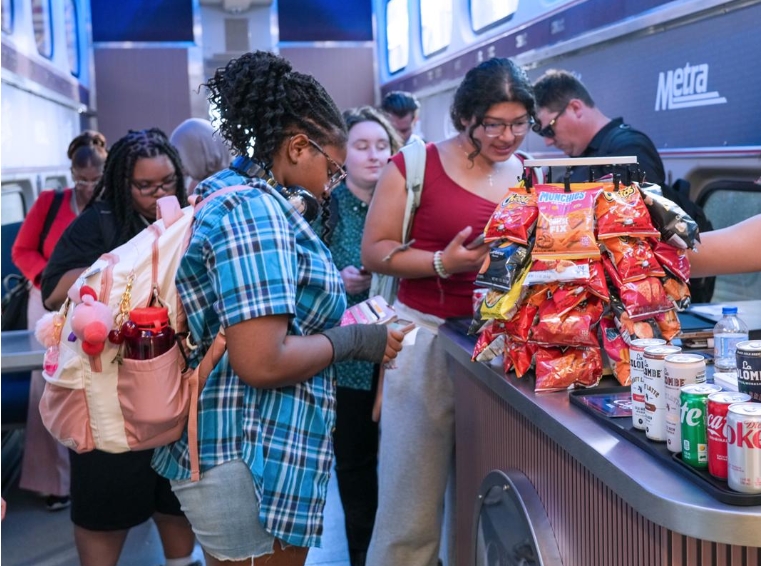
Passengers are invited to weigh in through an onboard survey accessed via QR code, part of Metra’s feedback initiative, to determine whether the concept should become permanent.
Survey questions ask riders how often they take Metra, which line they use, and how they would rate the Café Car’s space, comfort, and menu options. In exchange for their feedback, commuters enjoy free canned iced coffee, soda, chips, and other treats.
“We’ll just take a good, hard look at all the responses we get from people and decide whether to go forward with it, and how extensively to go forward with it at that point,” said Michael Gillis, Metra’s director of communications.
To stay informed about updates and events across Chicago’s transportation systems, visit:

